Garden Diary: June
Sometimes the most spectacular flowers in the garden get there on a whim. A few years ago, we tried out salsify roots for a vegetable. We liked it. It has a special flavor, something like a cross between artichoke and celeriac. We had bought more roots than we needed and planted one in the herb garden. That plant is still there; it produces beautiful, vanilla-scented flowers every year. To appreciate the beauty of the flower you have to “zoom in”.
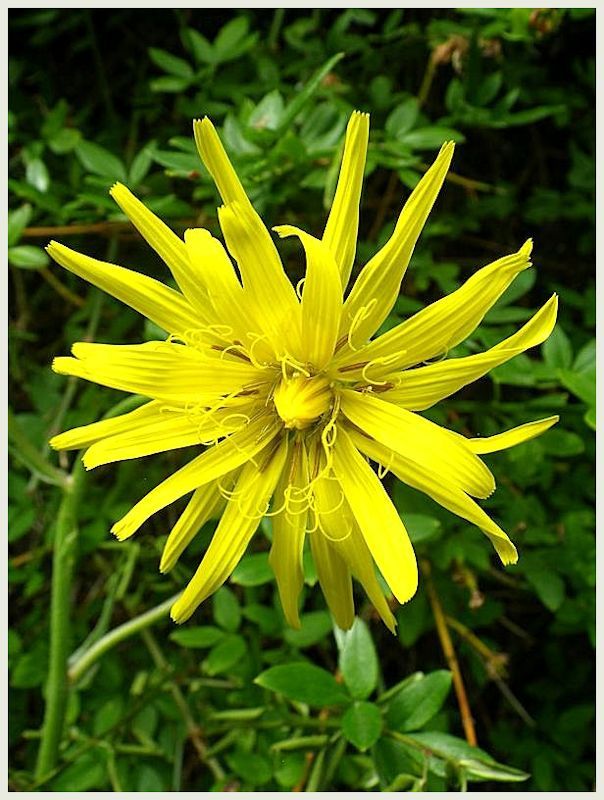
Salsify (Scorzonera hispanica)
This month we also learned that you need to give your plants a second chance. For years, our decades-old climbing rose has been attacked by insects in spring and by fungi in summer. It was an eyesore for most of the year and we had almost decided to take it out. But some rigorous pruning, careful removal of dead leaves from the soil and anti-insect spraying in spring has produced excellent results. I’m so glad we rescued this rose because it has been here for so long.
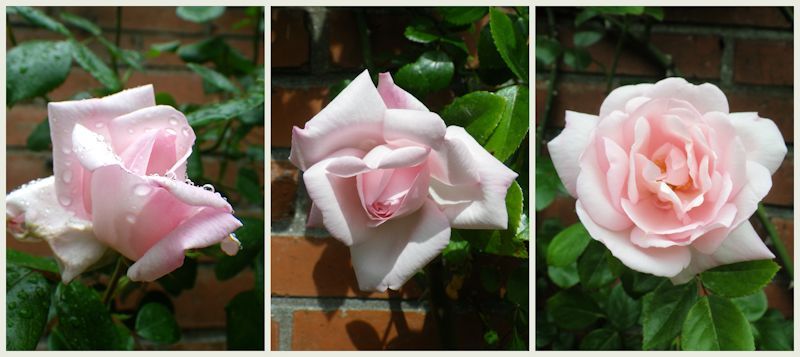
Climbing rose (Rosa)
In the hedge at the back of the garden there is also this sweet smelling wild rose.
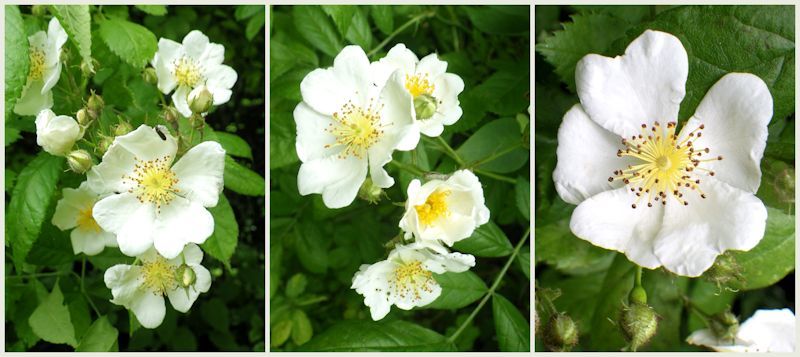
Several shrubs started to flower this month. Like those I showed last month, most of them have white flowers, smell delicious and attract lots of bees and bumblebees.

The firethorn (Pyracantha) was flowering early in June.
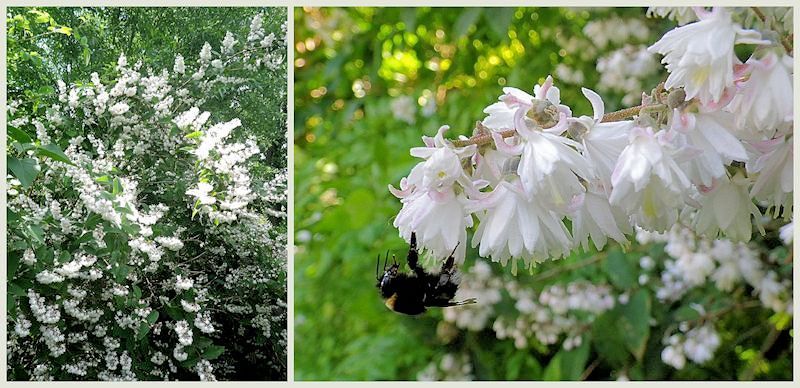
At the end of the month Deutzia was in full bloom. Trying to get pictures of the visiting insects became a bit of a sport.
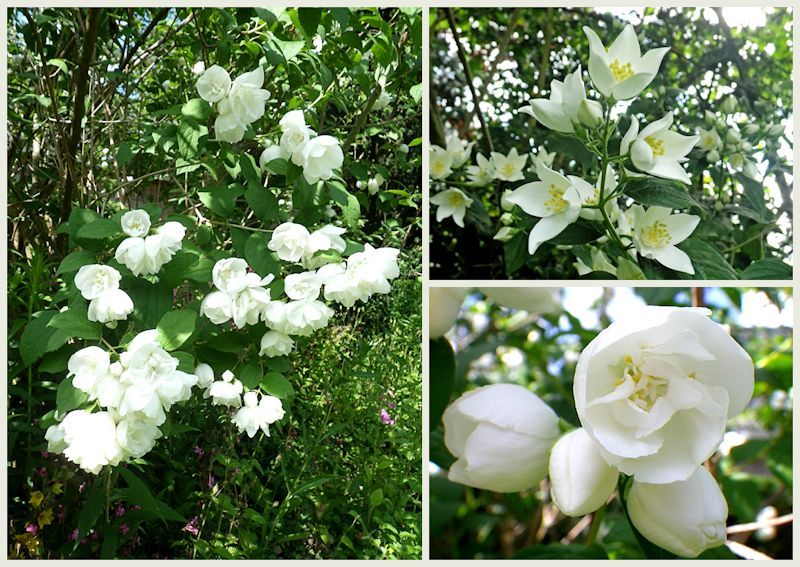
We have two mock-orange shrubs (Philadelphus), one with single and one with double flowers.
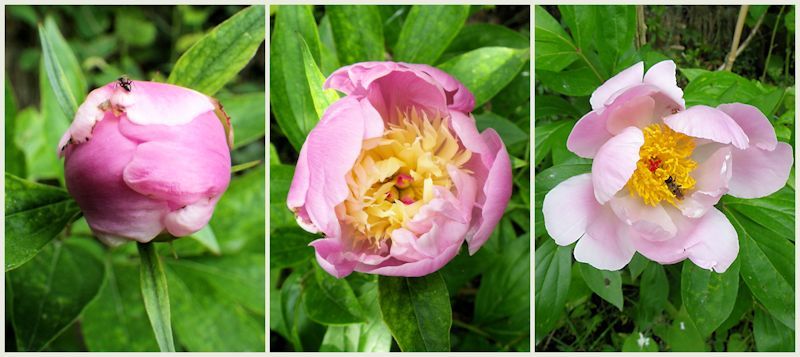
I was surprised to see that the peony (Paeonia) has different types of flowers. Taking pictures makes you register things you hadn't noticed before.
Some species that started to flower last month now create large splashes of color in the garden:
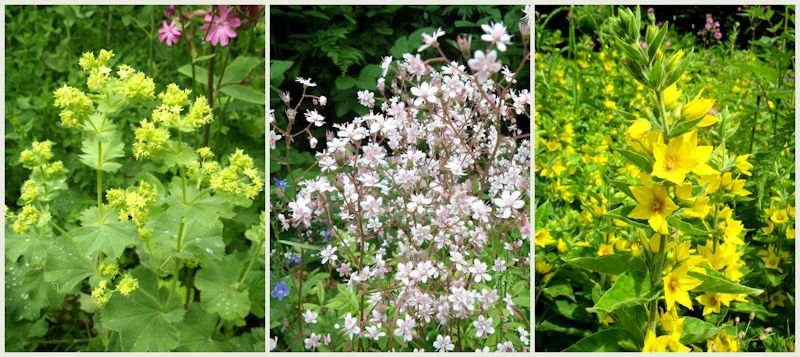
Lady's mantle (Alchemilla), London pride (Saxifraga urbium) and dotted loosestrife (Lysimachia punctata).
Several species have different color varieties:
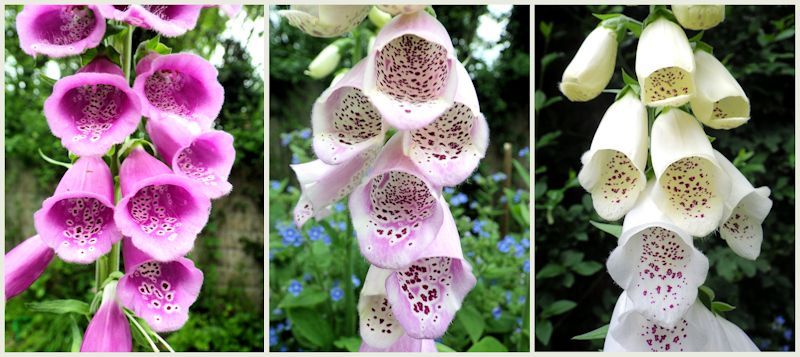
the foxglove (Digitalis purpurea),
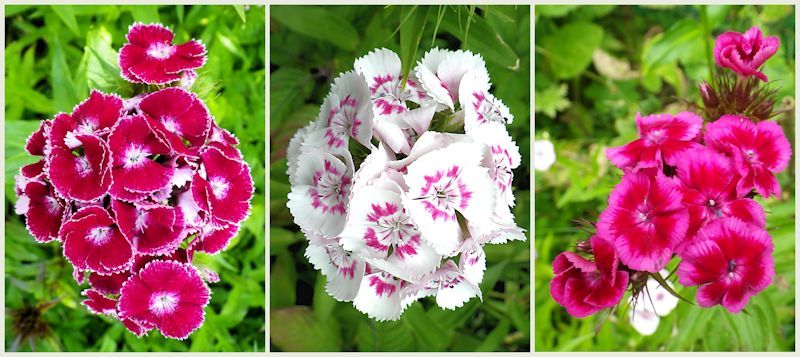
sweet william (Dianthus barbatus)
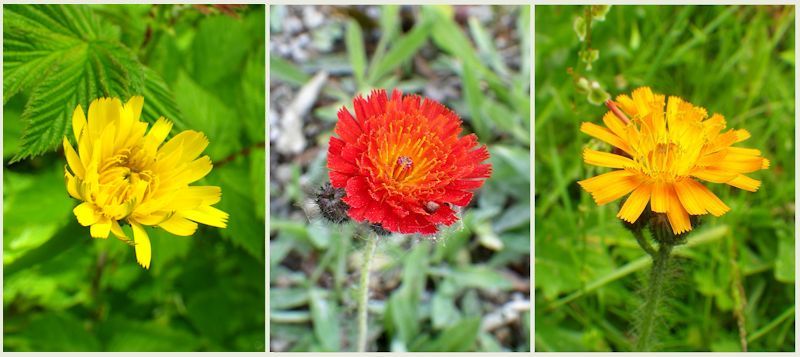
and hawkweed (Hieracium).

Water avans (Geum rivale) is a beauty both before, during and after the flowers are open.

Blue gromwell (Lithospermum purpurocaeruleum) is so hard to photograph. That kind of blue changes dramatically, depending on the light. Those of you familiar with Ellis Peters’ Brother Cadfael novels (set at Shrewsbury monastry in the 12th century), may remember that blue gromwell helped Brother Cadfael solve one of his murder mysteries (the one introducing sister Magdalen).
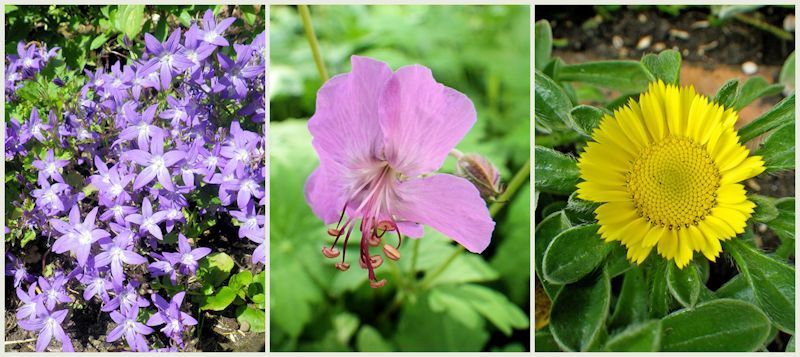
As if our garden wasn't full enough, we bought some new plants this spring: trailing bellflower (Campanula poscharskyana), a new Geranium species and an unidentified yellow beauty (we forgot to keep the label).
Next, I'm getting to the useful plants:
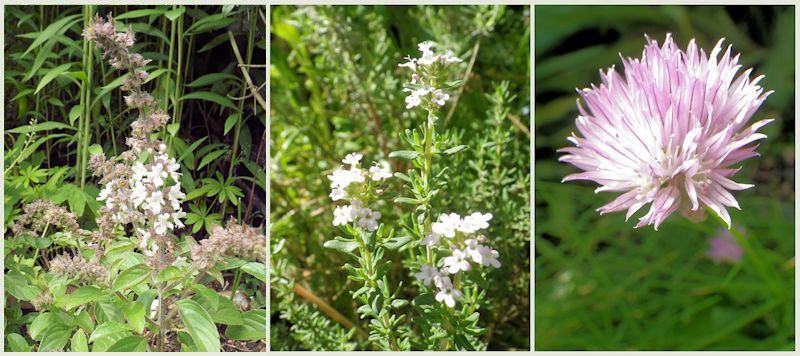
Herbs: basil, thyme and chive

and fruit: raspberry, gooseberry and red currant.
The last few frames are for our wild invaders: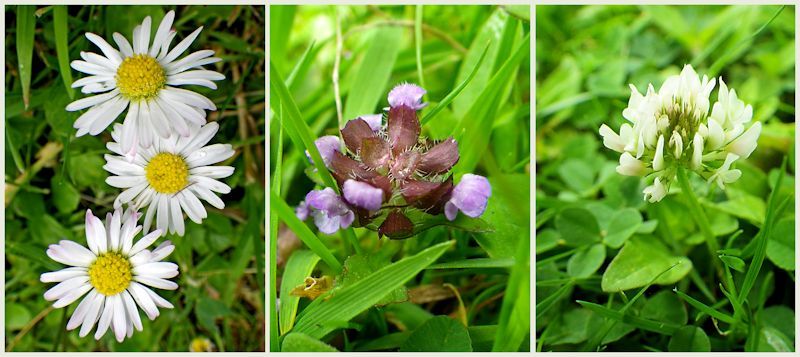
Daisy (Bellis perennis), self heal (Prunella vulgaris) and white clover (Trifolium repens) in the lawn. Mowing doesn't seem to harm them at all.

Elsewhere in the garden we have: sorrel (Rumex acetosa), meadow vetchling (Lathyrus pratensis), hedge woundwort (Stachys sylvatica),

fireweed (Chamerion angustifolium), St John's wort (Hypericum perforatum) and the flowering grasses that make me snuffle so much.
When I was about to finish this post I spotted some more species that have just started flowering. They'll have to wait till next month.
Meanwhile, we are preparing for a heatwave. Temperatures of up to 34C are expected for later this week.

Salsify (Scorzonera hispanica)
This month we also learned that you need to give your plants a second chance. For years, our decades-old climbing rose has been attacked by insects in spring and by fungi in summer. It was an eyesore for most of the year and we had almost decided to take it out. But some rigorous pruning, careful removal of dead leaves from the soil and anti-insect spraying in spring has produced excellent results. I’m so glad we rescued this rose because it has been here for so long.

Climbing rose (Rosa)
In the hedge at the back of the garden there is also this sweet smelling wild rose.

Several shrubs started to flower this month. Like those I showed last month, most of them have white flowers, smell delicious and attract lots of bees and bumblebees.

The firethorn (Pyracantha) was flowering early in June.

At the end of the month Deutzia was in full bloom. Trying to get pictures of the visiting insects became a bit of a sport.

We have two mock-orange shrubs (Philadelphus), one with single and one with double flowers.

I was surprised to see that the peony (Paeonia) has different types of flowers. Taking pictures makes you register things you hadn't noticed before.
Some species that started to flower last month now create large splashes of color in the garden:

Lady's mantle (Alchemilla), London pride (Saxifraga urbium) and dotted loosestrife (Lysimachia punctata).
Several species have different color varieties:

the foxglove (Digitalis purpurea),

sweet william (Dianthus barbatus)

and hawkweed (Hieracium).

Water avans (Geum rivale) is a beauty both before, during and after the flowers are open.

Blue gromwell (Lithospermum purpurocaeruleum) is so hard to photograph. That kind of blue changes dramatically, depending on the light. Those of you familiar with Ellis Peters’ Brother Cadfael novels (set at Shrewsbury monastry in the 12th century), may remember that blue gromwell helped Brother Cadfael solve one of his murder mysteries (the one introducing sister Magdalen).

As if our garden wasn't full enough, we bought some new plants this spring: trailing bellflower (Campanula poscharskyana), a new Geranium species and an unidentified yellow beauty (we forgot to keep the label).
Next, I'm getting to the useful plants:

Herbs: basil, thyme and chive

and fruit: raspberry, gooseberry and red currant.
The last few frames are for our wild invaders:

Daisy (Bellis perennis), self heal (Prunella vulgaris) and white clover (Trifolium repens) in the lawn. Mowing doesn't seem to harm them at all.

Elsewhere in the garden we have: sorrel (Rumex acetosa), meadow vetchling (Lathyrus pratensis), hedge woundwort (Stachys sylvatica),

fireweed (Chamerion angustifolium), St John's wort (Hypericum perforatum) and the flowering grasses that make me snuffle so much.
When I was about to finish this post I spotted some more species that have just started flowering. They'll have to wait till next month.
Meanwhile, we are preparing for a heatwave. Temperatures of up to 34C are expected for later this week.